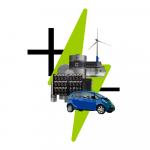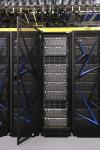Asset gallery
Media assets are free for editorial broadcast, print, and online use. It is restricted for use for other purposes.
-
Download: Hi Res (7.7 MB)
Pictured L-R: Rahm Emanuel, U.S. Ambassador to Japan, Darío Gil, Senior Vice President and Director of IBM Research, Professor Kohei Itoh, President, Keio University, Yun Duk-min, South Korea Ambassador to Japan. (Credit: US State Department)
-
Download: Hi Res (1.8 MB)
CREDIT: (Connie Zhou for IBM)
-
Download: Hi Res (1024 KB)
-
Download: Hi Res (361 KB)
In the next five years, we will discover new materials for safer and more environmentally-preferable batteries capable of supporting a renewable-based energy grid and more sustainable transportation. Many renewable energy sources are intermittent and require storage. The use of AI and quantum computing will result in batteries built with safer and more efficient materials for improved performance.
-
Download: Hi Res (6.1 MB)
The convergence of emerging technologies allows us to address the discovery process in a fundamentally new way. Once labelled promising but distant, quantum computers are developing steadily and show potential to simulate complex molecules on the fly, accurately and rapidly predicting the outcome of chemical reactions and helping us discover entirely new classes of materials.
Photo taken at 2018 ASCE (Credit: Graham Carlow)
-
Download: Hi Res (806 KB)
The convergence of emerging technologies allows us to address the discovery process in a fundamentally new way. AI and quantum will increasingly combine with rapidly-advancing high-performance classical computers as a platform for scientific discovery.
The IBM-built Summit supercomputer pictured here is the world's smartest and most powerful supercomputer. (Photo Credit: ORNL)
-
Download: Hi Res (4 MB)
IBM Chief Executive Officer Arvind Krishna (left) and Director of IBM Research Dario Gil are pictured with a 10-foot-tall and 6-foot-wide "super-fridge,” a dilution refrigerator larger than any commercially available. The “super-fridge” is being custom built by IBM to effectively support quantum systems as they scale to the thousands and eventually million-plus qubit systems of the future that will be capable of solving problems out of reach of today’s most powerful supercomputers (Credit: Connie Zhou for IBM)









